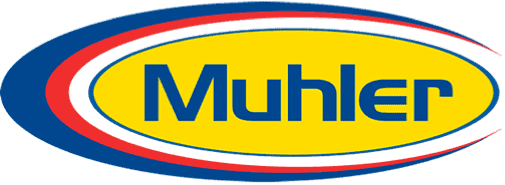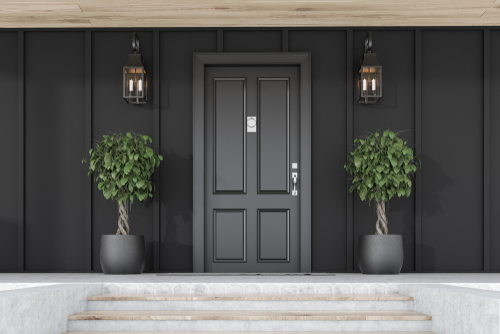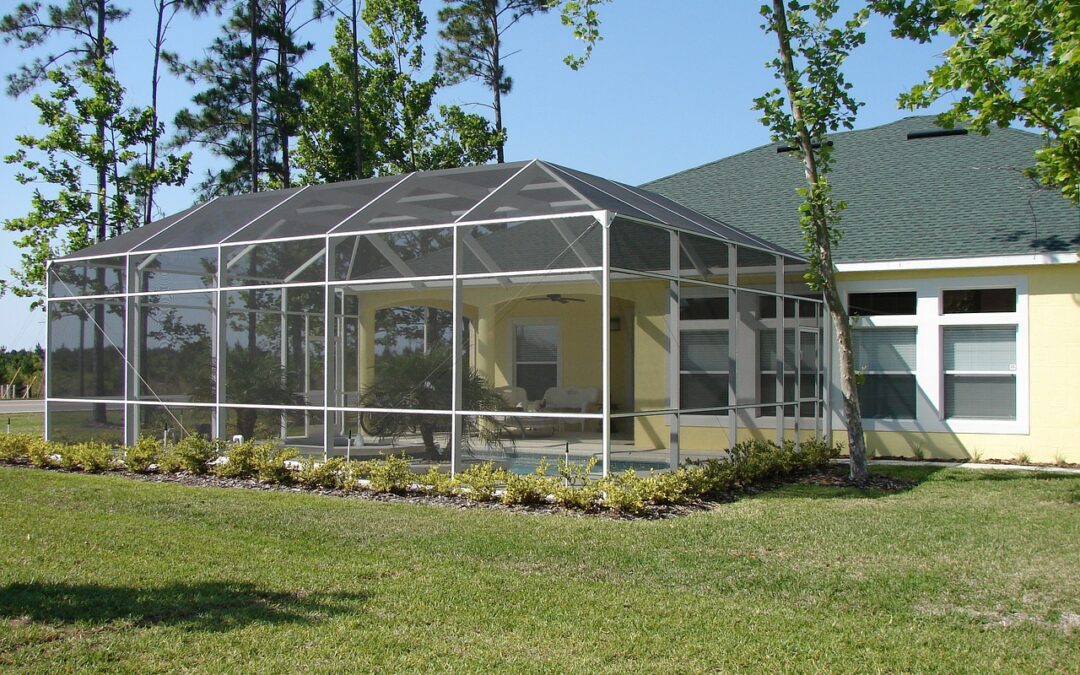Living in the beautiful Lowcountry brings countless joys, from stunning coastal views to rich historical architecture. However, homeowners in Charleston, Mount Pleasant, Sullivan’s Island, and surrounding areas face unique challenges when protecting their homes. The combination of salt air, high humidity, hurricane threats, and intense UV exposure creates a perfect storm that can quickly deteriorate standard windows and doors. At Muhler, we’ve spent over 30 years helping Lowcountry homeowners select and install the perfect windows and doors designed specifically for coastal environments. This comprehensive guide will walk you through everything you need to know about selecting, installing, and maintaining windows and doors that match our unique coastal climate while enhancing your home’s beauty, efficiency, and value.
Understanding the Unique Challenges of Coastal Living
The Corrosive Impact of Salt Air
One of the most relentless enemies of coastal homes is salt air. Unlike inland homes, homes near the ocean are constantly exposed to airborne salt particles that can wreak havoc on standard building materials. These microscopic salt crystals settle on surfaces and, when combined with moisture, create a highly corrosive environment that can deteriorate frames, hardware, and glass seals much faster than in non-coastal regions.
Salt air doesn’t just affect the exterior of windows and doors – it can penetrate tiny openings and begin corroding internal components, explains our head of installation at Muhler. This is why standard windows that might last 20+ years inland often need replacement in as little as 5-7 years in coastal environments without proper protection.
Salt corrosion typically begins with discoloration and progresses to pitting, material weakening, and structural failure. In coastal Charleston homes, we regularly see corroded hinges, locks, and frame materials that have prematurely failed due to salt exposure.
Humidity and Moisture Considerations
The Lowcountry’s signature humidity poses another significant challenge for windows and doors. With relative humidity regularly exceeding 70% throughout the year, moisture can penetrate window and door materials, leading to swelling, warping, and mold growth.
This high humidity also creates the perfect environment for condensation to form on glass surfaces. When warm, moisture-laden air contacts cooler glass surfaces (particularly during air conditioning season), condensation forms and can damage window sills, promote mold growth, and reduce visibility.
Hurricane and Storm Protection
Perhaps the most dramatic threat to Lowcountry homes comes from our hurricane season. With researchers predicting stronger and more frequent storms for South Carolina, having windows and doors that can withstand extreme wind pressures and flying debris has never been more critical.
Standard windows can become dangerous during storms, with broken glass creating immediate safety hazards and allowing wind and water to cause catastrophic internal damage to your home. When a window breaks during a storm, the resulting pressure changes inside your home can lead to structural failures in other areas, including roof damage.
UV Exposure and Heat Management
The Lowcountry enjoys abundant sunshine, but this brings another challenge: intense UV exposure that can fade furniture, flooring, and artwork while creating uncomfortable heat gain. Standard windows do little to block these harmful rays, leading to higher cooling costs and interior damage over time.
Coastal-Specific Window Solutions for Lowcountry Homes
Impact-Resistant Windows: The Gold Standard for Coastal Living
For homeowners in Charleston and surrounding coastal communities, impact-resistant windows represent the most comprehensive solution to our unique challenges. These specialized windows feature laminated glass with a strong interlayer (similar to car windshields) that holds together even when shattered.
Impact windows serve multiple purposes in a coastal environment, notes our window design specialist. They provide hurricane protection, improved security, noise reduction, and UV filtering—all in one product.
The benefits of impact-resistant windows for Lowcountry homes include:
Storm Protection: Eliminates the need for hurricane shutters or panels and provides 24/7 protection without preparation
Enhanced Security: Significantly more difficult for intruders to breach compared to standard glass
UV Filtering: Most impact glass blocks 99% of harmful UV rays, protecting your furnishings and reducing cooling costs
Noise Reduction: Laminated glass provides superior sound dampening, ideal for homes in busy areas of Charleston
Insurance Savings: Many insurance providers offer premium discounts for homes with impact-resistant windows
Increased Home Value: A significant selling point for future buyers concerned about storm protection
Vinyl Windows: Corrosion Resistance Meets Energy Efficiency
Vinyl windows have become increasingly popular for Lowcountry homes due to their exceptional resistance to salt air corrosion and moisture damage. Unlike wood that can rot or metal that can corrode, vinyl remains stable in our coastal environment.
Modern vinyl windows have overcome many of the aesthetic limitations of earlier generations. Today’s options include:
Coastal-Grade Vinyl: Formulated with additional UV stabilizers for longer life in intense sun exposure
Wood-Grain Finishes: Perfect for traditional Charleston homes needing the look of wood without the maintenance
Multi-Chamber Design: Provides superior insulation against our hot summers and occasional cold snaps
Welded Corners: Creates a seamless frame that prevents water penetration even during driving rains[5]
One of the biggest misconceptions about vinyl windows is that they all look the same, shares our design consultant. Today’s premium vinyl windows offer a range of colors, finishes, and profiles that can complement any architectural style, from historic Charleston single houses to modern coastal designs.
Aluminum-Clad Windows: Best of Both Worlds
For homeowners seeking the warmth of wood interiors with maximum coastal durability, aluminum-clad windows offer an ideal solution. These windows feature a protected wood interior with a durable aluminum exterior that resists corrosion when properly finished with coastal-grade paint systems.
Aluminum-clad windows are particularly popular for:
– Historic home renovations where maintaining interior wood details is important
– Architectural designs requiring custom shapes and sizes
– Homes where owners want the warmth of wood interiors with minimal exterior maintenance[3]
Doors Designed for Coastal Challenges
Fiberglass Entry Doors: Superior Salt Resistance
Entry doors face perhaps the toughest exposure conditions of any home component, making material selection critical for Lowcountry homes. Fiberglass entry doors have emerged as the preferred choice for coastal environments due to their:
Complete resistance to salt air corrosion
Dimensional stability in fluctuating humidity
Excellent insulation properties
A wide range of styles mimicking wood without the maintenance issues
Enhanced security features
A quality fiberglass entry door installed in a coastal home can easily last 15-20 years with minimal maintenance, compared to wood doors that might need refinishing every 2-3 years and can warp in our humidity, notes our door installation team leader at Muhler.
Sliding Glass Doors with Coastal Considerations
For patio areas, sliding glass doors need special considerations in our coastal environment. Look for:
Marine-grade hardware that resists corrosion
Multiple weather seals to prevent salt air infiltration
Heavy-duty rollers are designed for coastal debris that can collect in tracks
Impact-resistant glass options for storm protection
Multi-point locking systems for enhanced security and weathertightness
Installation Considerations for Coastal Environments
Even the best coastal windows and doors will fail prematurely if improperly installed. At Muhler, our installation teams are specially trained in coastal-specific techniques, including:
Enhanced flashing protocols that account for our driving rains
Specialized sealants rated for UV exposure and salt environments
Corrosion-resistant fasteners (often stainless steel) that won’t deteriorate in salt air
Proper drainage accommodations for our heavy downpours
Specific techniques for various exterior claddings are common in Charleston homes
The installation is just as necessary as the product itself,” emphasizes our installation manager. Premium windows fail within years because installers used standard techniques and materials unsuited for coastal conditions.
Maintaining Windows and Doors in the Lowcountry
Even with the best coastal-grade windows and doors, proper maintenance is essential for maximizing lifespan in our challenging environment. We recommend:
Quarterly Maintenance:
– Thoroughly rinse exterior surfaces with fresh water to remove salt deposits
– Clean and lubricate hardware with corrosion-inhibiting products
– Inspect weatherstripping and seals for damage
– Check drainage paths and weep holes to ensure they’re clear[6]
Annual Maintenance:
– Inspect all sealants and replace any that show cracking or separation
– Check for water staining that might indicate seal failures
– Examine frames for any discoloration that could indicate corrosion beginning
– Test operation to identify any developing issues before they worsen
Our maintenance specialist notes that many homeowners don’t realize that simply rinsing windows and doors quarterly with fresh water can dramatically extend their lifespan by removing accumulated salt deposits before they can cause damage.
Location-Specific Considerations in the Lowcountry
Different areas within the Lowcountry face varying levels of coastal exposure, requiring tailored approaches:
Beachfront and Harbor-Front Properties
Homes directly facing the ocean or harbor in areas like Sullivan’s Island, Isle of Palms, and parts of downtown Charleston experience maximum salt exposure and require the highest grade of coastal protection. For these homes, we typically recommend:
– Impact-resistant glass as a baseline requirement
– Premium vinyl or aluminum-clad fiberglass frames
– Marine-grade hardware throughout
– Specialized installation techniques
Second Row and Near-Coastal Properties
Homes in Mount Pleasant, James Island, and slightly inland areas still require coastal-grade products but may have more options. These locations typically see:
– Moderately high salt exposure
– Strong but somewhat reduced UV exposure
– Significant hurricane risk[3]
Inland Lowcountry Locations
Even homes in Summerville, Goose Creek, and other inland communities experience more salt and humidity than many parts of the country. These homes benefit from:
– Humidity-resistant window and door materials
– Good UV protection
– Standard hurricane considerations[3]
Choosing the Right Coastal Windows and Doors for Your Home
At Muhler, we understand that every Lowcountry home has unique needs based on its location, architecture, and the owner’s priorities. Our comprehensive consultation process includes:
1. In-home evaluation of your specific exposure conditions
2. Architectural assessment to recommend products that enhance your home’s style
3. Budget planning that balances initial investment with long-term performance
4. Installation planning tailored to your home’s construction
5. Maintenance guidance for maximum longevity
Our founder says we believe in providing solutions, not just selling products. For over 30 years, we’ve been helping Lowcountry homeowners navigate the complex world of coastal windows and doors with honest, expert guidance.
Conclusion: Investing in Coastal Protection
Choosing the right windows and doors for your Lowcountry home is about more than aesthetics—it’s about protecting your investment against our uniquely challenging environment. With properly selected and installed coastal-grade windows and doors, you can enjoy:
Peace of mind during storm season
Reduced maintenance requirements
Lower energy bills
Enhanced comfort year-round
Preserved home value
Authentic architectural beauty that lasts
At Muhler, we’re committed to helping Charleston, Mount Pleasant, Sullivan’s Island, Isle of Palms, James Island, and all Lowcountry homeowners find the perfect window and door solutions for their coastal homes. Our decades of experience, specifically focused on coastal challenges, make us uniquely qualified to address the specific needs of homes in our region.
Ready to protect your Lowcountry home with windows and doors designed for our coastal environment? Contact Muhler today for a complimentary consultation, or visit our Charleston showroom to see our coastal-specific options in person. Our team of Lowcountry window and door experts is ready to help you navigate the best choices for your specific location and home style.
Visit our showroom at 630 Skylark Dr., Suite U, Charleston, South Carolina 29407, or call us at 843.702.6175 to schedule your free consultation.
As the Lowcountry’s leading provider of windows, doors, and storm protection solutions for over 30 years, we at Muhler have witnessed firsthand the evolution of home safety technology. With hurricane season approaching, homeowners in Charleston and surrounding areas are increasingly seeking solutions that combine superior storm protection with the conveniences of modern smart home technology. In this comprehensive guide, we’ll explore how integrating smart technology with hurricane-resistant windows and doors can enhance both your home’s safety and your quality of life.
The Evolution of Storm Protection Technology
Gone are the days when storm protection meant simply boarding up windows or installing basic storm shutters. Today’s hurricane-resistant windows and doors incorporate advanced materials, sophisticated engineering, and cutting-edge technology to provide unparalleled protection without sacrificing aesthetics or convenience.
From Basic Protection to Smart Integration
Traditional storm protection systems like accordion hurricane shutters and impact-resistant windows have been the cornerstone of coastal home safety for decades. These systems provide essential protection against flying debris and extreme weather conditions. However, as smart home technology has evolved, so too has the functionality of storm protection solutions.
Smart storm protection systems now allow homeowners to monitor and control their windows and doors remotely, receive real-time weather alerts, and automate protection measures based on environmental conditions. This integration of technology with traditional storm protection creates a more responsive, efficient, and user-friendly system that enhances both safety and convenience.
Key Components of Smart Storm Protection Systems
Smart Impact-Resistant Windows
Impact-resistant windows have long been a staple of coastal home protection. These windows feature laminated glass that holds together when shattered, preventing dangerous debris from entering your home during a storm. Today’s smart impact-resistant windows take this protection to the next level by incorporating:
- Automated tinting technology: Adjusts window transparency based on sunlight intensity, helping to regulate indoor temperature and reduce energy costs
- Remote monitoring capabilities: Allows homeowners to check the status of windows from anywhere via smartphone apps
- Integration with weather alert systems: Automatically triggers protective measures when severe weather is detected
These smart features not only enhance storm protection but also contribute to improved energy efficiency and everyday convenience. At Muhler, we’ve seen increasing demand for these dual-purpose solutions that serve both protective and lifestyle functions.
Intelligent Hurricane Shutters
Traditional hurricane shutters provide excellent protection against storms, but can be cumbersome to deploy manually. Smart hurricane shutters address this limitation through:
- Motorized operation: Deploy or retract shutters with the push of a button or through automated systems
- Weather-responsive automation: Automatically deploy when weather conditions meet predetermined thresholds
- Remote control capabilities: Operate shutters from anywhere using smartphone apps
- Voice control integration: Compatible with voice assistants like Alexa or Google Home
These intelligent shutters provide peace of mind for homeowners who may be away during storm season or who want the convenience of rapid deployment without manual effort.
Smart Door Systems with Enhanced Storm Protection
Entry doors are critical vulnerability points during severe weather. Smart storm doors combine robust construction with intelligent features to provide comprehensive protection and convenience:
- Reinforced materials: Fiberglass, steel, or impact-resistant glass components that withstand extreme weather conditions
- Multi-point locking systems: Automated locks that engage at multiple points for enhanced security during storms
- Water intrusion sensors: Alert homeowners to potential water penetration during heavy rainfall
- Remote access control: Allow homeowners to verify door security status remotely
Benefits of Integrating Smart Technology with Storm Protection
Enhanced Safety Through Automation
One of the most significant advantages of smart storm protection systems is the ability to automate protective measures based on real-time weather data. Rather than relying on manual deployment of storm shutters or panels, which may be impossible if you’re away from home when a storm approaches, smart systems can automatically implement protective measures when triggered by weather alerts.
This automation ensures that your home is protected even when you can’t be there to deploy traditional storm protection systems, providing invaluable peace of mind during hurricane season.
Improved Energy Efficiency
Smart storm protection systems don’t just protect your home during extreme weather—they also contribute to improved energy efficiency year-round. Smart windows with low-E glass and automated tinting capabilities help regulate indoor temperature, reducing the burden on your HVAC system. Similarly, intelligently controlled storm shutters can be programmed to adjust based on sunlight exposure, helping to keep your home cooler in summer and warmer in winter.
These energy-efficient features not only reduce utility costs but also contribute to a more comfortable living environment throughout the year, making smart storm protection a wise investment beyond just hurricane season.
Convenience and Accessibility
Traditional storm protection systems can be challenging to deploy, especially for elderly homeowners or those with mobility limitations. Smart storm protection eliminates these challenges by enabling remote control of shutters, windows, and doors through smartphone apps or voice commands.
This enhanced accessibility ensures that all homeowners can effectively protect their homes during severe weather, regardless of physical capabilities. At Muhler, we believe that effective storm protection should be accessible to everyone, which is why we emphasize user-friendly smart solutions in our product offerings.
Implementing Smart Storm Protection in Your Home
Assessment and Planning
The first step in implementing smart storm protection is a comprehensive assessment of your home’s specific needs. Factors to consider include:
- Your home’s architectural design and exposure to elements
- Local building codes and wind zone requirements
- Existing window and door configurations
- Budget considerations
- Desired level of automation and integration
At Muhler, we offer professional consultations to help homeowners evaluate these factors and develop a customized smart storm protection plan tailored to their specific needs and preferences.
Integration with Existing Smart Home Systems
For homeowners who already use smart home systems, integration is a key consideration. Modern smart storm protection solutions can integrate seamlessly with popular platforms like Amazon Alexa, Google Home, and Apple HomeKit. This integration allows for centralized control of all home systems, including storm protection, through a single interface.
When selecting smart storm protection products, it’s important to verify compatibility with your existing smart home ecosystem to ensure seamless operation and avoid the frustration of managing multiple disconnected systems.
Phased Implementation
For many homeowners, implementing comprehensive smart storm protection represents a significant investment. A phased approach can make this investment more manageable by prioritizing the most critical areas of protection first and adding additional components over time.
Common phasing strategies include:
- Starting with primary living areas and gradually expanding to the entire home
- Beginning with smart hurricane shutters and later adding smart impact windows
- Implementing basic remote monitoring capabilities first and adding automation features later
The Future of Smart Storm Protection
As we look ahead to the remainder of 2025 and beyond, several emerging trends are shaping the future of smart storm protection:
AI-Powered Predictive Protection
Artificial intelligence is increasingly being incorporated into smart home systems to predict potential threats and implement proactive protection measures. In the context of storm protection, AI algorithms can analyze weather patterns, historical data, and real-time conditions to anticipate the severity of approaching storms and automatically adjust protection levels accordingly.
Enhanced Integration and Interoperability
The smart home industry is moving toward greater standardization and interoperability between different systems and brands. This trend will make it easier for homeowners to integrate smart storm protection with other home systems, creating a more cohesive and efficient overall smart home experience.
Sustainable Materials and Energy Independence
As environmental consciousness grows, smart storm protection systems are incorporating more sustainable materials and energy-independent features. Solar-powered operation, recyclable materials, and energy-harvesting capabilities are becoming more common in high-end smart storm protection products.
Conclusion: Protecting Your Home with Smart Technology
At Muhler, we’ve been protecting Lowcountry homes from storms for over three decades, and we’re excited about the enhanced protection and convenience that smart technology brings to hurricane-resistant windows and doors. By combining robust physical protection with intelligent automation and remote control capabilities, smart storm protection systems represent the future of coastal home safety.
As we approach the 2025 hurricane season, we encourage homeowners to consider how smart storm protection solutions can enhance both the safety and value of their homes. Whether you’re building new, renovating, or simply upgrading your existing storm protection, the integration of smart technology offers unprecedented levels of protection, convenience, and peace of mind.
Contact Muhler today for a personalized consultation to explore how smart storm protection can be implemented in your home. Our team of experts is ready to help you navigate the exciting possibilities of this innovative approach to hurricane protection.







